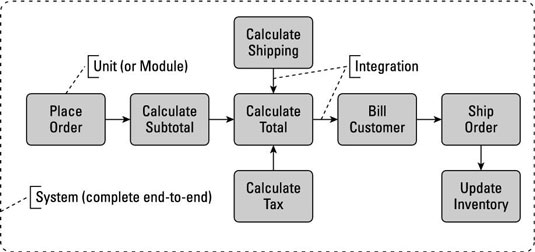BUSINESS ANALYSIS: A BASIC PROJECT LIFE CYCLE
Part of Business Analysis For Dummies Cheat Sheet
Business analysis projects all follow the same basic life cycle. A project is a set of steps that accomplish something, so describing business analysis activities as part of a project life cycle makes sense. Although each project you undertake is different, and you must always remain fluid and flexible to some degree, business analysis tasks follow a general order:
- Plan the project
Create a work plan and at least think through an approach for the analysis effort. - Scope the project
Define and document the project boundaries and analyze the business problem without deciding on a solution. This job includes clearly identifying the opportunity or problem the company needs to address. - Elicit, analyze, and communicate requirements
This task is the lion’s share of what business analysis professionals do at the project level. Understand the real business needs and find the root cause of business problems, and communicate requirements to the intended audience. - Design the solution
Business analysts (BAs) aren’t typically responsible for this activity; instead, they support the solution team through this effort. - Build or buy the solution
The business and project team make a decision based on the results of the activities Steps 1 through 4 to buy a solution prepackaged, build one internally, or have a group outside the company build it. During this time, your role is to ensure the solution still meets the business need stated in the project objectives and the business requirements. - Test the solution
As the solution is being designed and built, collaborate with the test team to validate that the solution meets the business needs elicited during the project. - Implement the solution
Make sure business uses the solution. You actively work with project stakeholders as the solution rolls out. You may work as a change agent, advocating the need for change, and you may also train new users on the system. - Conduct post-implementation review
After the solution has been implemented, you need to make sure it’s meeting the goals outlined in the project. If not, this discrepancy may lead to another project to address the gap. Basically, you want to make sure the business is actually using the solution you provided.
Source of content



The basic project life cycle typically consists of the following phases:
ReplyDeleteInitiation:
Define the project goals and objectives.
Conduct a feasibility study.
Identify stakeholders.
Develop a project charter.
Planning:
Create a detailed project plan.
Define scope, budget, and timeline.
Identify risks and develop mitigation strategies.
Allocate resources and assign responsibilities.
Execution:
Implement the project plan.
Coordinate team activities and communicate progress.
Manage resources and stakeholder expectations.
Ensure quality control.
Monitoring and Controlling:
Track project progress against the plan.
Adjust plans as necessary based on performance and risks.
Manage changes to the project scope, schedule, and costs.
Report on project status to stakeholders.
Closure:
Complete all project deliverables.
Obtain formal acceptance from stakeholders.
Conduct a project review and document lessons learned.
Release project resources and close out contracts.
Each phase is essential for the successful delivery of the project and ensures that objectives are met efficiently.
final year projects for computer science
Final Year Project Centers in Chennai
IEEE projects for cse